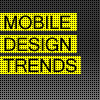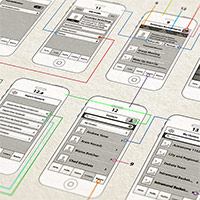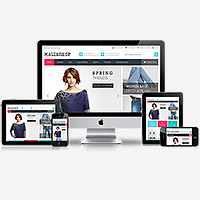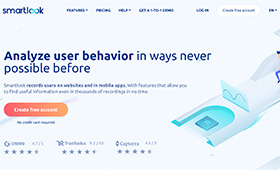Top 5 Mobile UX Design Trends For 2019
The area of mobile UX design is a dynamic one. Some rules constantly change while some remain the same throughout the years. The most interesting aspect of it is that it depends solely on the users and what they expect from their devices.
The emphasis is mostly on aesthetics – as humans respond best to great visual cues – but also on functionality and usability of the device and the software involved. Based on this and recent demands on the market, we can predict what the trends in the upcoming year will be. These have been around for a while but are now seeing an improvement and a shift towards everyday use in mobile UX design.
Christophe Mallet, for instance believes that mobile UX design will be dominated by trends that simplify human life while Lara Hanlon (IBM) and Nick Babich think that the main focus will be on design and voice interfaces.
From an expert to an expert, opinions on what the top trend will be shifts but one thing remains for certain – these trends are all focused on improving human experience with technology. We are all more or less certain what will be popular in the next year but it will be more a matter of execution than the matter of what it is.
Here are the top 5 mobile UX Design trends that you should be ready for in 2019.
Smart and Personalized User Experience
Personalization has been a big thing in most industries for years now and this trend will only continue to grow, empowered by Big Data, IoT and Machine Learning. Companies will be able to use more of these tools in the future to create a smarter and more personalized user experience.
For one, the chatbot technology will continue advancing. Users are already happy with the functionality of the chatbots but this will be further improved by Natural Language Processing technology where the chatbot will be able to recognise and understand natural speech patterns. If you don’t already have a chatbot as a part of your marketing strategy, work on including it. Not only does it provide for an excellent UX but it also gives you the data on frequent questions, requests and so on that you could use to improve your services or products.
You should also pay attention to some other elements of a personalized experience like transparency and security. Invest your time into ensuring that your users are safe in your app and that you are completely transparent about where their data goes. Keep in mind that users get attached to their devices and apps they use – they expect you to know their pain points and implement some timely solutions.
Here is what you can do:
- Include an in-app chat option so users can get help when they need it
- Make your app responsive to age differences – it should adjust colors and fonts to the age of the user
- Have login memory features
- Push notifications – implement them moderately, don’t annoy the user
Design features that can save you time
“The design tendencies in the future will shift more towards removing friction and providing users with a smooth and seamless experience. This is based on the fact that users have an average attention span of 8 seconds and they expect everything to work perfectly”, – says Horace Mansfield, a UX analyst from AcademicBrits.com and 1Day2write.com.
The trick will be in finding ways to save time while still not ruining the UX. Here are some options that could work for you in the future:
- Using a familiar navigation pattern
- Making certain features available only when users need them
- Anticipating user actions while designing
- Creating a linear UX where the user gets to perform one action per step
- Having unobtrusive popups that show how a user could utilize the app in a more efficient way
AR and VR features
What you should expect in 2019 in the field of AR are some new and creative ways to incorporate it into products. While AR has been used mainly in gaming in the past, you can now expect it to take a turn to become a useful tool in many product-based industries.
There are plenty of AR apps which have found ways to be successful at this. With camera and screen technologies improving, you will witness AR improving and becoming increasingly appealing to users.
You can use it to show what the product would look like in various rooms – or with the user – to give customers a hint of what it looks and feels like in real life.
Virtual reality will not be far behind in the upcoming year. Experts predict that more and more companies will employ it as a way to show an experience – the main thing users are hunting for. VR is suitable for service-based apps and businesses so you can expect that more and more of them will offer interesting features like for instance, a VR experience of a certain destination or a restaurant.
Voice control features
Voice control and search is becoming more and more popular with each year. While it used to be very laggy and the AI never really understood the users, now we are witnessing the rise of Google Home Assistant, Apple Home, Alexa and so on.
This will translate well into devices which will in turn result in more voice searches and control demand, empowered and enabled by Semantic search technology and Natural Language processing tech.
You can incorporate and use this in your app. Just like with Chatbots, it gives your users a better experience and provides you with an abundance of data on common searches. Make sure to put an emphasis on the quality of these options as they can often end up being worse than regular control and search.
This trend plays on simplicity and ease with which users can control an app – without even using their hands. This would be a great addition to your app and make it even more popular.
More videos and smarter video navigation
“Video is taking the world by a storm. This will become even more obvious in the future as video became one of the main means of communication with the users. Considering the short attention span users have, video is the perfect way to keep them interested and engaged. Mobile users are especially prone to this”, – says Marina Burton, a mobile UX designer from Writemyx.com.
In the future, you should try incorporating short and concise videos instead of usual blocks if text. For instance, create a short informative video that will stand in place of your current ‘About Us’ page. Instead of writing instructions for using the app, put them in a video.
Instead of product descriptions, use a video. You’ll definitely notice more engagement and views from the users.
Conclusion
These have been some of the most popular trends in UX mobile design for the upcoming year. Some of them have already been developed and used up to a point while some are yet to be explored in the future.
Definitely consider incorporating them in your app or even overlapping some of them like your chatbot and video – have the chatbot answer the users in short explanatory videos or make videos more personalized to different target audiences. Hopefully, these trends will inspire you to up your game and stand out on the market.







No responses yet to “Top 5 Mobile UX Design Trends For 2019”